
News + Trends
HMD Pulse: The new smartphones from HMD are easier to repair
by Jan Johannsen

HMD’s first smartphones are affordable entry-level devices, and the Pulse Pro is the one with the best features. However, there’s a common weak point amongst the sibling models.
HMD has been manufacturing smartphones for around ten years. Previously, they were known as Nokia. This changes with the Pulse series, whose three devices differ primarily in their cameras. The Pro model nominally has the cameras with the highest resolution. But the weak point all models have in common is the chipset.
With cheap smartphones, my only requirement is that they have enough power to animate the user interface smoothly. Unfortunately, the HMD Pulse Pro can’t even do that. The built-in Unisoc T606 was already presented at the end of 2019 and was intended for the entry-level models back then. Although it has six gigabytes of RAM at its disposal, even this doesn’t compensate for its weakness. It’s not a pleasant experience when operating the smartphone. HMD is cutting costs in the wrong places.
A look at the results of the benchmark tests shows impressively how little power the T606 has compared to the chipsets of other low-cost smartphones.
The issue with the old chipset is that NFC is available, but the data connection is limited to 4G as well as Wi-Fi 4 and Bluetooth is only available in version 5.0.
The battery has a capacity of 5,000 mAh, a normal value for a smartphone. But the weak hardware still doesn’t have a positive impact on battery life. In the PCMark battery test, the HMD Pulse achieves 8:12 hours at full display brightness. An average value and not high enough to put up with the chipset as a result. When charging, the battery consumes a maximum of ten watts. It takes more than two hours to fully charge the device.
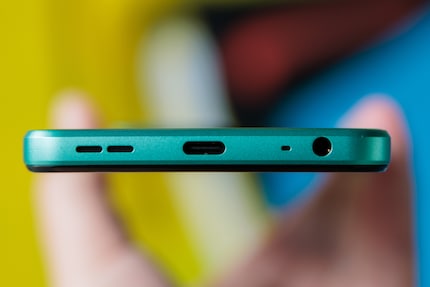
Unlike most new smartphones, the Pulse Pro offers a 3.5-mm connection. Still, this isn’t a reason to go after the phone. The 128-gigabyte storage can be expanded with a microSD card.
The HMD Pulse Pro is well made for its price. The only drawback is the material used for the back. It’s plastic, not metal or glass. I still find it visually appealing, even if it’s not particularly eye-catching. The entire device is protected against dust and dripping water in accordance with IP52.
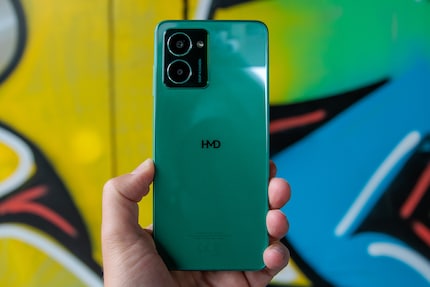
On the front is a 6.65-inch, high-contrast large LCD touchscreen with a refresh rate of 90 hertz. At 1612 × 720 pixels, the resolution isn’t particularly high. At 265 ppi, the pixel density is below the 300 ppi threshold, at which a display is considered sharp to the human eye. However, the distance is so small that the Pulse Pro’s display already has a high level of detail. The low brightness of 480 nits might be problematic. The screen content isn’t easy to see in sunlight. Only shade can help.
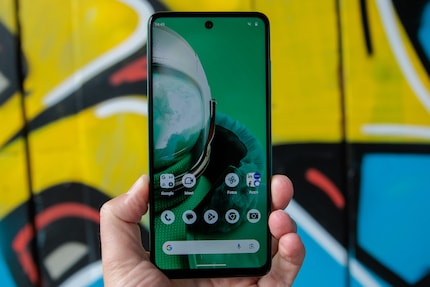
HMD has installed the fingerprint sensor in the power button on the side of the Pulse Pro. It can be used to unlock the smartphone directly and reliably once it’s out of standby mode.
It’s obvious what the HMD Pulse Pro is offering in terms of cameras. There’s a camera on the back and one on the front for selfies, both of which have a 50-megapixel resolution. In practice, however, it uses pixel binning. Four pixels are combined into one. In theory, this should result in higher light sensitivity and ultimately better image quality. Also, the second camera on the back just provides information for the blurred background in portrait shots.
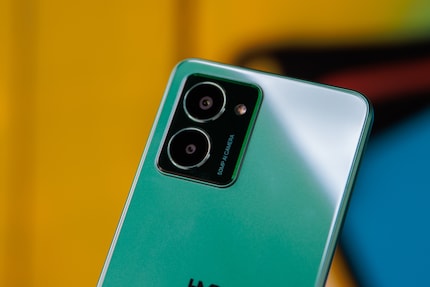
I’m not blown away by the photos on the HMD Pulse Pro. It’s fine for tourist snapshots in the sunshine. On closer inspection, however, the colour reproduction turns out pale and the level of detail low. High resolution alone doesn’t guarantee good pictures.


Still, it handles contrasts pretty well.

The maximum sixfold zoom is only digital. Since the original images aren’t great, the result doesn’t look any better if you enlarge a section of them.

When it’s dark, the automatic system already manages to utilise the available light. The lighting of the night comes across well. However, the picture is very pixelated and this doesn’t get any better with night mode. It just brightens the image a little more.


The front camera seems to be just as good as the camera on the back. This is usually rare, but is mainly due to the main camera being pretty bad. Nevertheless the person taking a selfie can see themselves on the small smartphone display. The level of detail is sufficient and the colours also look good.

However, it can’t be too dark when you take them. Night mode doesn’t produce great photos for selfies either.

Android 14 runs on the HMD Pulse Pro. The operating system is installed by the manufacturer with a few customisations. The monochrome app logos on the start page are particularly striking – and I get a visual reminder of the Nothing Phone interface. Luckily, there’s not a ton of pre-installed apps from third-party providers, and they can be removed with just a few clicks.
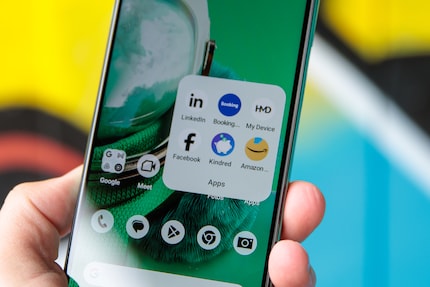
Unfortunately, HMD only plans to deliver two Android updates for the Pulse Pro. Even for an inexpensive smartphone, I’d like longer support. Security updates are also only available for a similar length of time.
My expectations are low when it comes to cheap smartphones. But even these aren’t met by the HMD Pulse Pro. In some places, the manufacturer hasn’t put enough in the budget. This is annoying, since it’s the first product under the new brand name and it doesn’t leave a positive impression.
The processor is too slow, the display too dark, the camera can only be used in good light and the update period is too short. For me, there’s no reason to buy the HMD Pulse. In this price range, I’d rather go for the Moto G54 from Motorola or the Samsung Galaxy A15.
Pro
Contra
As a primary school pupil, I used to sit in a friend's living room with many of my classmates to play the Super NES. Now I get my hands on the latest technology and test it for you. In recent years at Curved, Computer Bild and Netzwelt, now at Digitec and Galaxus.